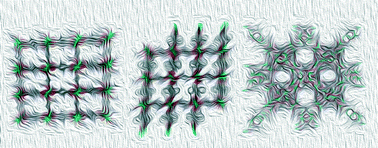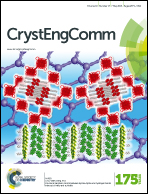Slow relaxation of magnetization in 3D-MOFs based on dysprosium dinuclear entities bridged by dicarboxylic linkers†
Abstract
Three novel metal–organic-frameworks (MOFs) based on dysprosium as the metal and dicarboxylic ligands have been solvothermally synthesized with the aim of studying and modulating their magnetic properties according to the variation of the distances between metal centers. These materials display intense photoluminescence properties in the solid state at room temperature. In addition, a very interesting property of compound 1 is that it exhibits slow relaxation of magnetization with an activation energy barrier of 32 K. Magneto-structural correlations have been analyzed.


 Please wait while we load your content...
Please wait while we load your content...